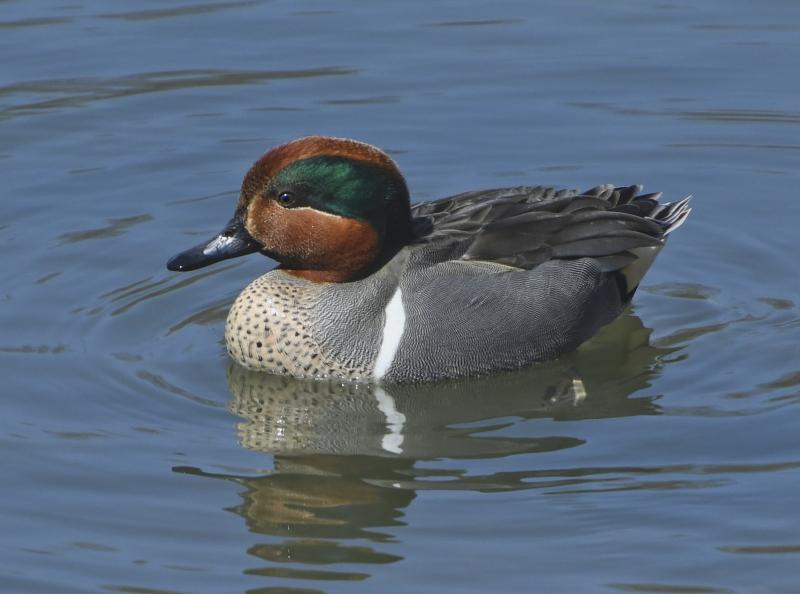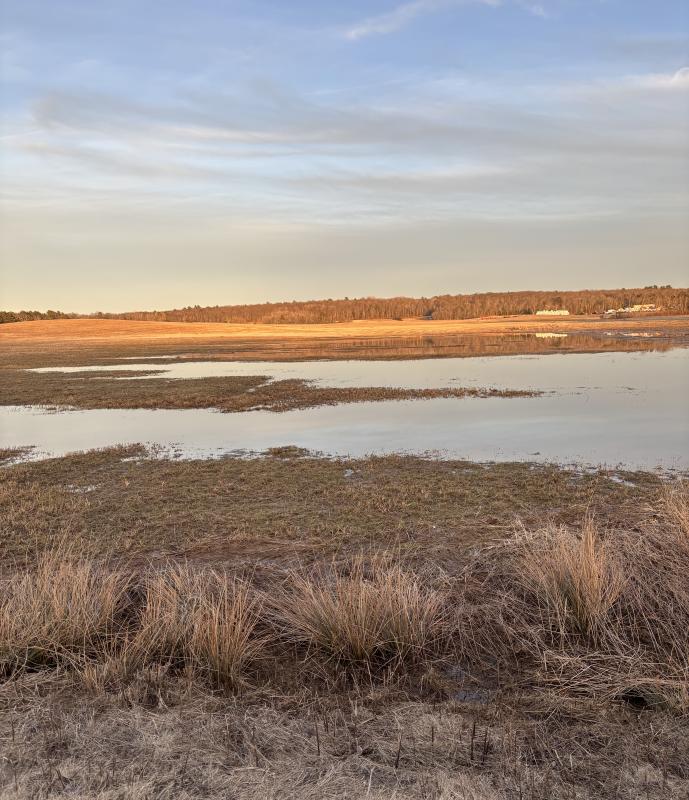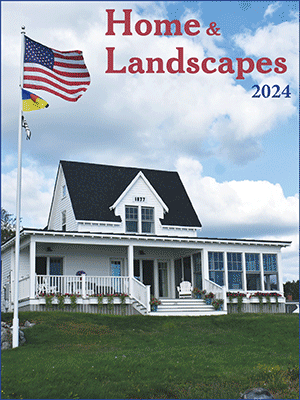Maine's Tiniest Duck
 The green in the wing of the male green-winged teal may not always be visible, but the green patch in the rufous head is always striking. Courtesy of Mykola Swarnyk, courtesy of Wikimedia Commons
The green in the wing of the male green-winged teal may not always be visible, but the green patch in the rufous head is always striking. Courtesy of Mykola Swarnyk, courtesy of Wikimedia Commons
 Even temporary wetlands like the authors' "pop-up pond" are important for birds during migration. Courtesy of Allison Wells
Even temporary wetlands like the authors' "pop-up pond" are important for birds during migration. Courtesy of Allison Wells
 Green-winged teal like to feed in shallow water and mudflats these females are doing here, with the single male. Photo by lwolfartist, courtesy of Wikimedia Commons
Green-winged teal like to feed in shallow water and mudflats these females are doing here, with the single male. Photo by lwolfartist, courtesy of Wikimedia Commons
 The green in the wing of the male green-winged teal may not always be visible, but the green patch in the rufous head is always striking. Courtesy of Mykola Swarnyk, courtesy of Wikimedia Commons
The green in the wing of the male green-winged teal may not always be visible, but the green patch in the rufous head is always striking. Courtesy of Mykola Swarnyk, courtesy of Wikimedia Commons
 Even temporary wetlands like the authors' "pop-up pond" are important for birds during migration. Courtesy of Allison Wells
Even temporary wetlands like the authors' "pop-up pond" are important for birds during migration. Courtesy of Allison Wells
 Green-winged teal like to feed in shallow water and mudflats these females are doing here, with the single male. Photo by lwolfartist, courtesy of Wikimedia Commons
Green-winged teal like to feed in shallow water and mudflats these females are doing here, with the single male. Photo by lwolfartist, courtesy of Wikimedia Commons
Some of you may remember that we have written fondly in the past about what we call a "pop-up pond" that appears after rain in a hayfield along a route that we check regularly for birds. With the March rains, we started checking that favorite spot again after the long winter when it was devoid of bird life.
On March 18th we were pleased to discover 13 of North America’s tiniest duck, the green-winged teal, busily grubbing around in the shallow water for food.
Despite its name, the little patch of emerald green on the wing is not what you first notice on the male green-winged teal. After you notice the diminutive size, it is the vivid emerald green patch on the sides of the rich, rufous-colored head that catches the eye. The beauty of the female plumage resides in the subtleties of browns, tans, and slight orange tinges that contrast with the green patch at the back of the body when the bird is at rest.
Depending on what taxonomist’s view you follow, there is either a single species of green-winged teal that breeds across North America and Eurasia or two species (some say even three). We do know that the males of those that breed in North America have a vertical white stripe on the side while those that breed in Eurasia have a horizontal white stripe. Birders here in Maine (and across North America) love to scan through flocks of green-winged teal to try to find the rare Eurasian bird; a few are found every year here in Maine.
One of the features of the green-winged teal that we have always loved is the call of the males in spring—a repeated, loud “peep.” It’s a bit like the sound of that beloved frog of spring, the spring peeper, but perhaps a bit shorter and more insistent. It’s easy for the sound to escape you as it is often heard at a distance amid the spring sounds of other waterfowl and other birds. And it’s a sound that you might not immediately associate with a duck.
Green-winged teal do nest in Maine in small numbers at scattered locations, but most of the population breeds in Canada—some estimates put the proportion of the North American population breeding there at eighty percent. Places like coastal Hudson and James Bay, the Saskatchewan River Delta, and parts of the Northwest Territories have particularly high densities of breeding green-winged teal.
Here in Maine in spring, the migration peaks around the first week of April. While most locations host fewer than twenty birds, a few places can build up numbers in the hundreds—places like Scarborough Marsh, and the mouth of the Abagadasset River in Merrymeeting Bay in Bowdoinham (a location often referred to as “The Abbey”). Birders have been finding green-winged teal the last few weeks at dozens of locations south of Bangor including at well-known birding hotspots like Weskeag Marsh in Thomaston and the Salt Bay Farm in Damariscotta.
By early May, it’ll be hard to find one of these little ducks except in a few choice locations. But, come September, they will be pushing back south through the state in numbers once again. Most will be on their way to the southern U.S. to winter, although an occasional bird will linger into the winter and make it onto a Christmas Bird Count tally.
Now’s the time to get a look at this, Maine’s tiniest duck, the green-winged teal.
Jeffrey V. Wells, Ph.D., is a Fellow of the Cornell Lab of Ornithology and Vice President of Boreal Conservation for National Audubon. Dr. Wells is one of the nation's leading bird experts and conservation biologists. He is a coauthor of the seminal “Birds of Maine” book and author of the “Birder’s Conservation Handbook.” His grandfather, the late John Chase, was a columnist for the Boothbay Register for many years. Allison Childs Wells, formerly of the Cornell Lab of Ornithology, is a senior director at the Natural Resources Council of Maine, a nonprofit membership organization working statewide to protect the nature of Maine. Both are widely published natural history writers and are the authors of the popular books, “Maine’s Favorite Birds” (Tilbury House) and “Birds of Aruba, Bonaire, and Curaçao: A Site and Field Guide,” (Cornell University Press).






































